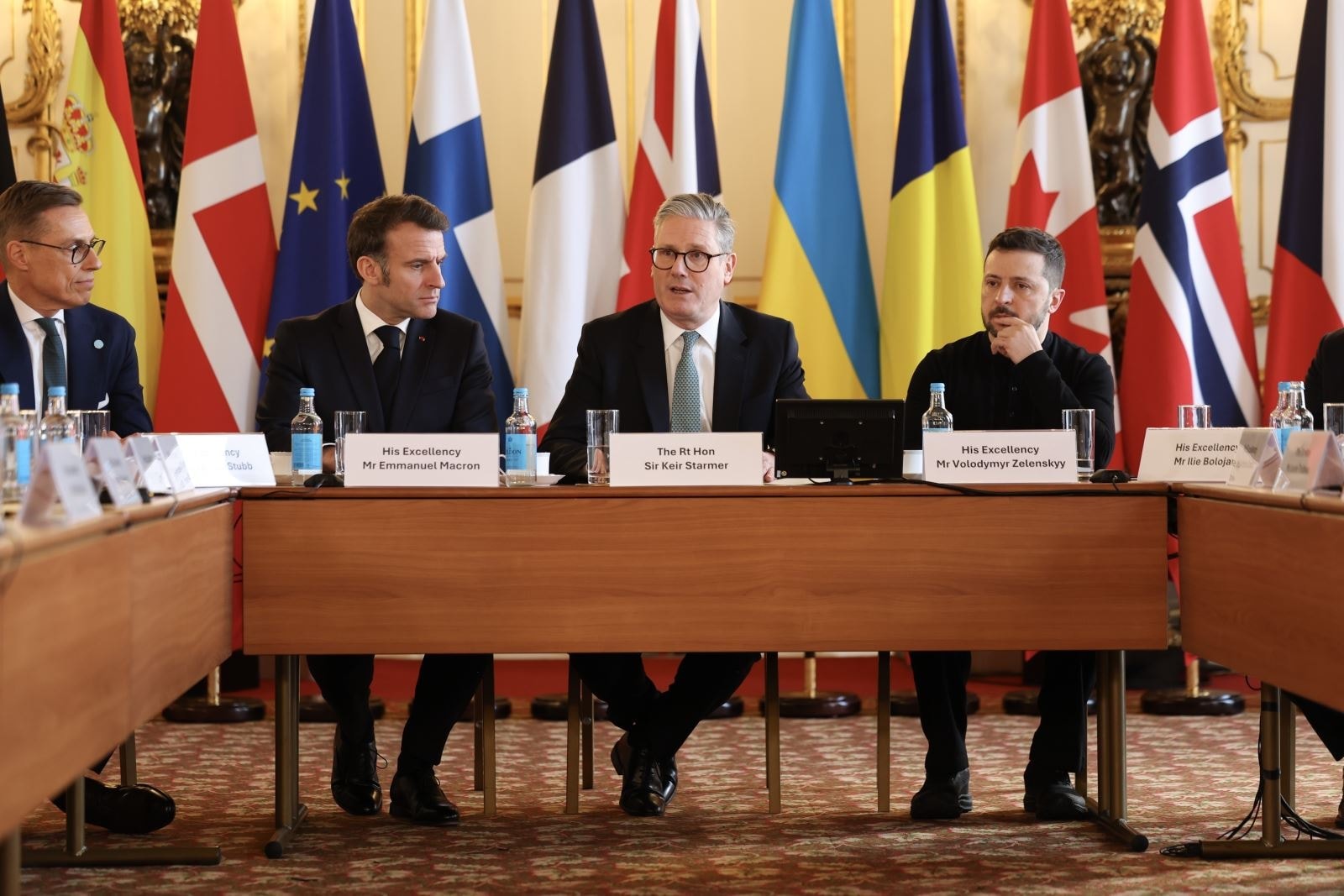Once fiercely opposed, European powers are now gradually changing their stance on frozen Russian assets. Will more than 200 billion euros become a means of financing Ukraine, or will this be a step fraught with legal risks?

As the Russia-Ukraine war enters its fourth year, European powers are taking new steps to deal with frozen Russian assets.
France, Germany and the UK, which had previously opposed seizing Russian central bank assets, are now considering using the money to support Ukraine if Moscow violates any future ceasefire agreements, a significant shift in European policy that reflects the complexity of the current situation.
Following Russia’s military campaign in Ukraine in 2022, the G7 countries froze about €300 billion in Russian Central Bank assets. Of these, about €190 billion was held at Belgium’s Euroclear, with smaller amounts held in France, the UK, Japan, Switzerland and the US.
Initially, European countries, especially France and Germany, opposed the seizure of these assets due to concerns about setting an international legal precedent and affecting the reputation of the euro.
However, the change in stance by European powers was driven by a number of factors. One of them was former US President Donald Trump’s decision to open bilateral talks with Russia, which increased the urgency of finding alternative sources of funding for Ukraine.
The recent tense meeting between President Trump and his Ukrainian counterpart Volodymyr Zelensky also put greater pressure on Europe to support Kiev.
France and Germany are discussing with Britain and other countries how to use the frozen funds to support Ukraine, according to the Financial Times (FT). French officials have proposed a plan that would see assets seized if Russia violates the ceasefire in the future.
This approach is seen as a measure to “hold Russia accountable” for any agreement, while also ensuring Ukraine’s security.
Currently, only the revenue from the frozen assets – mainly interest – is being used to repay the $50 billion in loans the G7 has given to Ukraine.
However, there is growing support for a full transfer of assets, with Ukraine, Poland and the Baltic states of Estonia, Lithuania and Latvia having repeatedly called for more drastic action.
Polish Prime Minister Donald Tusk wrote on social network X last month: “Enough talk, time for action! Let’s finance our aid to Ukraine from frozen Russian assets.” Estonian Foreign Minister Margus Tsahkna also stressed: “Now is the time to take the next step.”
Legal concerns and challenges
Still, the seizure of Russian assets raises legal and economic concerns, with the European Central Bank (ECB) warning that the move could threaten the euro’s status as a safe haven for foreign exchange reserves, as most of the assets frozen are held in euros.
Additionally, legal experts and government officials have warned that seizing state assets could violate international law and undermine confidence in Western financial institutions.
French President Emmanuel Macron has previously stressed that immediate asset seizures would not “respect international law”. However, he has suggested that the money could be “part of a negotiation once the conflict is over”.
Germany’s incoming chancellor Friedrich Merz has expressed support for the seizure of frozen Russian assets, according to the FT. He is expected to discuss the issue with outgoing chancellor Olaf Scholz ahead of a summit of EU leaders on March 6.
Meanwhile, British Prime Minister Keir Starmer said London was looking at how to deploy these assets, although he admitted that the issue was complex.
According to the New York Times, the World Bank estimates that Ukraine will need about $524 billion over 10 years to rebuild. Using frozen Russian assets could be an important source of funding to support this process.
Experts such as Lawrence H. Summers, former US Treasury Secretary, argue that both legal and financial barriers can be overcome with close international cooperation.
Thus, the shift in stance by European powers on frozen Russian assets reflects a significant shift in their approach to the Russia-Ukraine conflict. Although many legal and economic challenges remain, the consideration of seizing Russian assets shows Europe’s growing determination to support Ukraine.